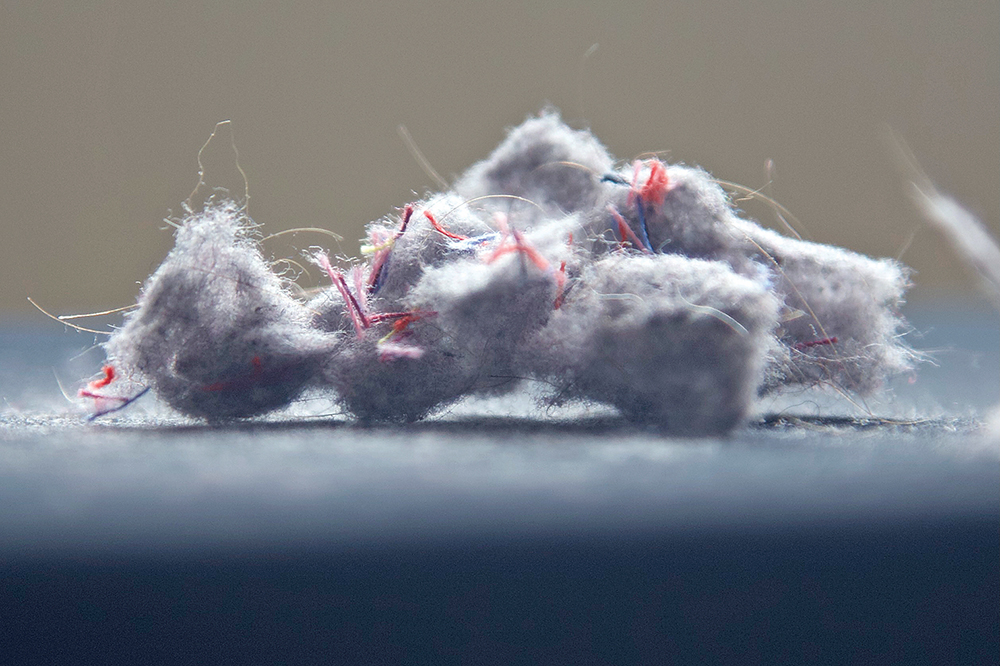Water Levels – Microplastic Pollution – Hospice – Blue Mountain

On the Level
Water levels on Lake Huron are still above their long-term average but waterfront property owners can breathe a sigh of relief as the high-water trend changes direction.
When the gales of November arrived in the fall of 2019, water levels on Lake Huron surged to near record highs. Just seven years earlier the lake was at a record low. That change from low to high was the most rapid ever seen on Georgian Bay.
The combination of high water and wind-generated waves caused millions of dollars of damage to waterfront properties, parks, and infrastructure. Millions more were spent reinforcing shorelines.
Over the past summer, the water started to recede slightly before plunging into another seasonal cycle in the autumn. According to the US Army Corps of Engineers, the level of Lakes Michigan, Huron, and Georgian Bay dropped a whopping 55 cm from December 2020 to December 2021. That downward trend is expected to continue with increased evaporation over the winter months.
Ice cover on the lakes could slow that evaporation, but experts at the National Oceanic and Atmospheric Administration’s (NOAA) Great Lakes Environmental Research Laboratory in Ann Arbor, MI, are watching for the effects of La Niña. The climate pattern typically promises unstable weather over the winter. NOAA’s data show that ice coverage on the Great Lakes is close to average during La Niña events over the long term, but five of eight strong La Niña winters had below-average ice cover and three had the least ice cover.
Less ice cover means more evaporation and lower water levels, but La Niña events also tend to bring increased precipitation to the Great Lakes basin. It’s difficult to predict how the changeable weather will impact lake levels next summer, but it appears the worst of the high-water crisis on Georgian Bay has now passed.
— Staff

Findings Favour Fibre Filters
As concern grows over microplastic pollution in the Great Lakes, a new study shows that household filters might be part of the answer, according to new research published in the Frontiers of Marine Science.
The pilot study completed by Georgian Bay Forever, in partnership with the Rochman Laboratory at the University of Toronto, looked at both natural and plastic/synthetic fibres that come loose from textiles in the wash.
Researchers say they compared the number of microfibres in wastewater being released into Georgian Bay before and after filters were installed on washing machines in 97 homes in Parry Sound.
“For just one year, for the households in our study, we estimate we diverted 934 million to 14.1 billion microfibres from wastewater treatment plants annually,” the study notes.
Natural microfibres are also a concern because of additive chemical treatments and dyes, bioavailability to organisms, and toxicity.
Wastewater treatment plants generally capture more than 83 per cent of microfibres, but some still pass through and are released into aquatic environments. Measurements in the study showed a significant reduction in post-treatment emissions after filters were installed.
“This directly equates to less microfibres entering Lake Huron via treated effluent,” the study states. “After installing washing machine filters, we observed a reduction in microfibres in final effluent by an average of 41 per cent.”


Palliative Care in South Georgian Bay Supported by Community
Without the support of the South Georgian Bay community, palliative care would look very different in our region. Since 1987, thanks to donations and volunteerism, more than 2,000 lives have been touched by Hospice Georgian Triangle.
Hospice Georgian Triangle provides compassionate care in the home and at Campbell House for individuals and families around Southern Georgian Bay who are dealing with life-limiting illness.
This care also includes respite care and programs in the community, such as grief and bereavement counselling, and specialized support for children and youth.
The Hospice’s group program participants have increased 54 per cent since April 2021. New referrals to these programs have increased more than 40 per cent.
“Hospice is not just about compassionate death. It is a special type of care that focuses on the quality of life for people, their families, and loved ones,” notes Ron Emo, Foundation Board Member and former Mayor of Collingwood. “We couldn’t do this work without the generosity of donors and the more than 100 volunteers.”
The Ontario government partially funds operating costs of Hospice Georgian Triangle. The Foundation relies on community donations of over $1.5 million annually to cover the remainder of the operating costs as well as all capital costs.
Over the past twelve months, ongoing community support helped Hospice Georgian Triangle reach several important objectives, including the opening of a new location on Hurontario Street in Collingwood. The new office houses The Community Support Team, The Foundation, and both The Palliative Pain and Symptom Management Clinic.
In late November, Hospice Georgian Triangle received accreditation by Hospice Palliative Care Ontario after undergoing a detailed assessment to ensure the organization has strong governance, operational, service delivery, fundraising, and quality improvement processes in place. Executive Director Trish Rawn says the accreditation was made possible by the dedicated staff and volunteers who provide the highest quality of care, compassion, and innovation that the organization is known for.
Hospice Georgian Triangle Foundation also welcomed Sandra Sullivan as the new Director of the Foundation. Sullivan was previously a Director at UJA Federation in Toronto, and prior to that she worked at North York General Hospital Foundation. Sullivan now leads the Hospice Georgian Triangle Foundation team in all aspects of fundraising, donor relations, and strategic planning.
To learn more about programs, volunteering, or how to make a charitable donation, visit Hospice Georgian Triangle online
www.hospicegeorgiantriangle.com.

Mask Up, Bar Down
by Roger Klein
Wearing a mask can help keep your face warm while riding a chairlift, but it’s also part of the routine safety mantra at Blue Mountain Resort. You will hear the words, “Mask Up, Bar Down,” around the ski lifts this winter. These four little words aim to keep guests safe without being too militant about mask enforcement when everyone just wants to have fun.
Masks are quickly becoming part of mountainside culture, just like helmets did over the past decade — and there is mounting evidence from across Canada that skiing is still a healthy outdoor activity, even in the midst of the pandemic. Steve Paccagnan, Chair of the Canadian Ski Council Board of Directors, says ski areas will continue to comply with federal, provincial, and local regulations as they are implemented. He adds that the industry’s track record speaks for itself.
“The winter of 2020/21 demonstrated the willingness of Canada’s 237 ski areas to work with health authorities to provide a healthy outdoor escape for Canadians,” he says. “The success of our health protocols meant that there were no recorded cases of Covid-19 transmission between guests at our ski areas.” And while it’s important to wear a mask for the safety of all the guests, it’s also a great way to keep your face warm.













